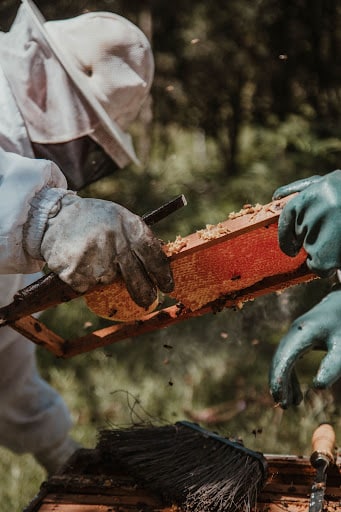Beekeeping on October
Beekeeping on October

October is the month when we should prepare the bees for what Mother Nature has in store for the upcoming winter season. You might be wondering, what could cause the demise of my bees during the winter? Beyond diseases from mite infestation, it can be either starvation or moisture.
- Mites are viruses. They out-produce the bees by spreading viruses onto the younger bees. These tiny menaces do not have a foolproof method for eradication so develop your plan and stick to it. The goal is to knock the mites down as far as possible before we put the hives away for the winter.
- Beekeepers are required to at least store sixty pounds of reserve honey. This is the minimum recommendation for each area. A deep frame full of capped stores can weigh anywhere from 6 to 10 pounds. This step is very important. If you don’t have this by now, start your fall feeding ASAP as time is running out.Take any late honey off. Remove all queen excluders to avoid the bees moving above the excluder into a feeder or leaving the queen below.
- It is a great idea to provide an additional supplemental food source during the winter. This can be done in a variety of ways – sugar boards, dry sugar (mountain camp method), winter patties, or others.
- Watch the weather and be ready to move quickly based on any fluctuations.
- Scout out your winterizing location and create a timeline to move the hive if you need to.
- Be conscious of how the bees heat the hive. The less space the bees have to heat the better. If the bees have empty bars or bars that will not contribute to winter survival (unused comb, unfilled or partially drawn out comb, empty space), remove them.
Depending on where you live, winter could be in full swing. It is better to prepare and plan a good time to be sure that you are ready to winterize your hive no matter what beekeeping systems or philosophies you follow.
